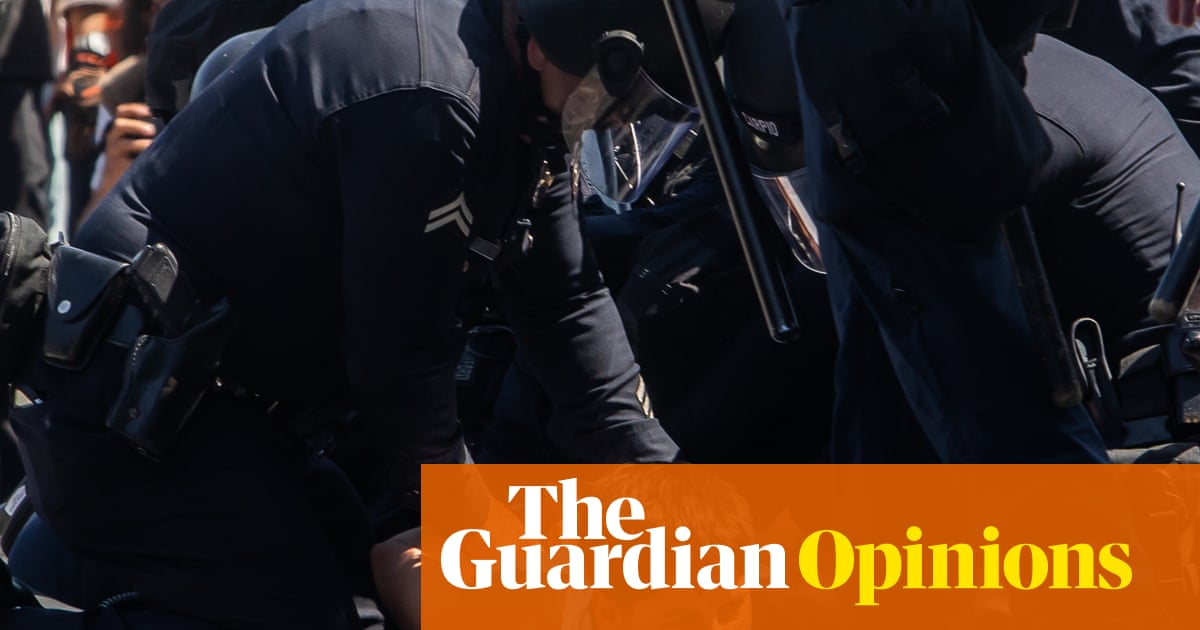Donald Trump will celebrate his birthday with aNorth Korean-style military paradecosting tens of millions of dollars this weekend. He has gratefully accepted the early gift of the demonstrations, which have spread across the country, with more scheduled for Saturday. The president’simmigration crackdownspurredoverwhelmingly peaceful protestsin Los Angeles. Ordering in troops, over the governor’s head, then inflamed the situation and allowed the agent of chaos to portray himself as its nemesis once more.
Mr Trump has diverted attention from his rift with Elon Musk, the stalling of his “big, beautiful” tax and spending bill, the court-ordered return of the wrongly deported Kilmar Ábrego García and the impending impact of tariffs. But underlying the manufactured crisis is a deeper agenda: reigniting fear of undocumented migrants, delegitimising protest, and thus expanding his power. Migrant families, and those who have taken to the streets to support them, areportrayed as “animals”and the perpetrators of “invasion and third-world lawlessness” – requiring Mr Trump to amass more might to protect America.
Gavin Newsom, the Democratic governor of California, rightly described this asan assault on democracy. As he noted, “authoritarian regimes begin by targeting people who are least able to defend themselves. But they do not stop there.” Due process has been discarded. American citizens are among those being swept up in raids. Mr Trump has said that Mr Newsom himself should be arrested. Stephen Miller, the White House deputy chief of staff, calls the protesters “insurrectionists” – though his boss, of course,pardoned the actual insurrectionistsof the January 6 Capitol attack.
Mr Trump’s tactics arefamiliarin both the broad and narrow sense. In his book On Tyranny, published in 2017, the historian Timothy Snyderurged readersto listen for “dangerous words” such as “emergency” and reminded them that “the sudden disaster” requiring the suspension of freedoms “is the oldest trick in the Hitlerian book”.
Mr Trump drew a bleak portrait of American carnage in his inaugural speech and described himself as“the only thing standing between the American dream and total anarchy”. Since his re-election he has declared emergencies to push through tariffs, loosen energy regulations and ramp up deportations. His methods are transparent – and sometimes blocked by courts – yet still effective. For his supporters, each rock thrown, each billow of smoke, is fresh evidence of the menacing “other” encroaching upon their home.
Yet if his methods are familiar, they are also going further. He has moved fromxenophobiato echoing fascist tropes of migrants “poisoning the blood” and portrays an enemy within,
suggesting that Mr Newsom and Karen Bass, the Los Angeles mayor, aretrying to aid “criminal invaders”. In his first term, Mr Trump threatened to invoke the Insurrection Act (and, reportedly, said that troops should “just shoot” Black Lives Matter protesters). Gen Mark Milley and others are no longer present to hold him back. Alarmingly, he warns that any protests at his parade will face “very heavy force”.
All those who stand against Mr Trump’s weaponised bigotry and hunger for untrammelled power must make it clear that they are defending the law and not defying it. Responsibly challenging the abuse and entrenchment of power is not only the right of citizens, but a duty.
